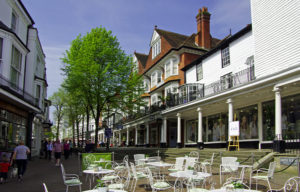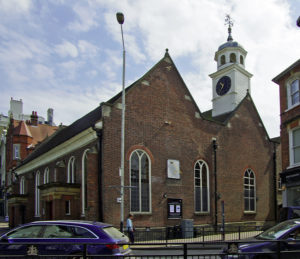Royal Tunbridge Wells has been on the tourist tick list for four hundred years, ever since the chalybeate wells were discovered here in 1606. The town rapidly grew in size and was a favourite destination for fashionable society to be seen. The Royal prefix was granted by Edward VII. The elegant Georgian Pantiles were built from the original spa well to the town. This provided, and still does, a pleasant tree lined walk with its colonnade of small shops and many cafes. On Saturday mornings it is busy with the market.
The High Street was built later and is Victorian. It still has a range of very up market family owned shops. The chain stores which blight so many of our high streets don’t get a look in here. The Station buildings still retain their air of grandeur
The Church of King Charles the Martyr was built to serve the wealthy visitors coming to take the waters and is one of the few churches built in the C17th. It is rather an unexceptional building on the outside but is worth visiting for the fine plasterwork ceilings.
The town is blessed with a range of parks and open spaces. Across from the Pantiles is Royal Park, a pleasant place to drop out with its grass and mature trees. Dunorlan Park has a boating lake, Grecian Temple, ornamental fountain and cafe. Calverley Grounds near the station has beautifully maintained flower beds.
The original Assembly Rooms were replaced by the Assembly Hall Theatre in 1939 and still hosts a variety of popular music, comedy, family, dance, drama, classical music and variety events, as well as the annual pantomime.
The Museum tend to get overlooked and has exhibits covering the history of the town covering the hop picking industry, Tunbridge ware (C18th marquetry items) as well as the spa. It also has an art gallery.
If you are wanting to learn about the history of the town, join a guided walk on a Thursday or Saturday morning, or pick up a self guided walking trail from the Tourist Information Centre.









